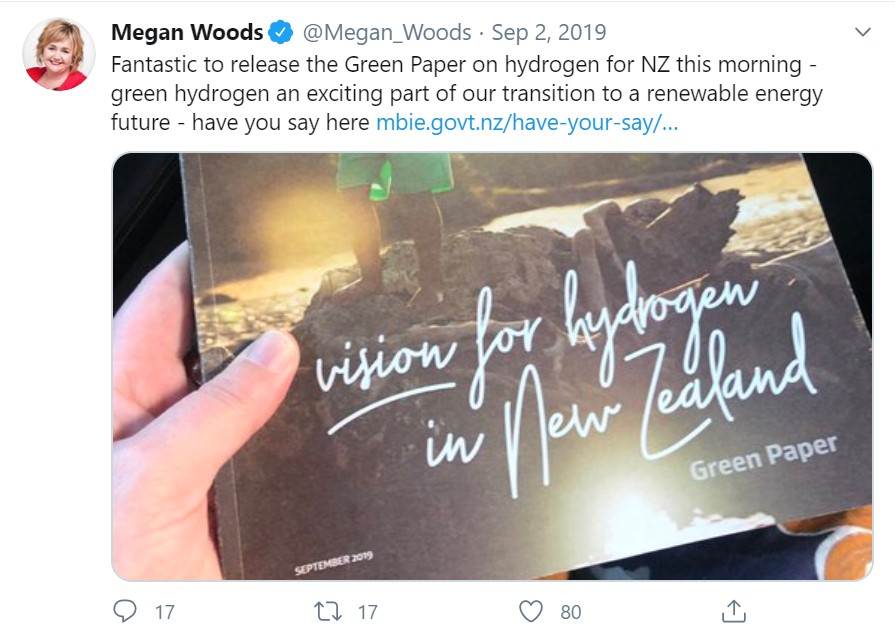In September of 2019, with great fanfare, our esteemed Doctor of History and Minister of Energy and Resources and of Research, Science and Innovation Megan Woods announced a pathway to a hydrogen economy for New Zealand.
The Government is charting the way towards a more renewable energy system with the launch of a national vision for hydrogen, Energy and Resources Minister Megan Woods announced today. […]
“I consider green hydrogen as one of the potential tools that will help assist us to reduce global emissions.
“With hydrogen, we have opportunities to create new jobs, convert heavy transport away from fossil fuels, enhance our security of electricity supply and even generate significant export revenue.
“For a country blessed with abundant renewable energy, the ability to convert our clean electricity into green hydrogen which can fetch a premium on global markets is a major economic opportunity.
In March 2020 BloombergNEF produced a paper about the future of hydrogen. It contained a very informative graphic in the opening pages, backed by the quote below.

Hydrogen is a clean-burning molecule that could become a zero-carbon
substitute for fossil fuels in hard-to-abate sectors of the economy. The cost of
producing hydrogen from renewables is primed to fall, but demand needs to be
created to drive down costs, and a wide range of delivery infrastructure needs
to be built. That won’t happen without new government targets and subsidies.
Notice all the weasel words in the scenario: Should drive the cost down; costs could fall further; watch to see whether a hydrogen economy is emerging.
And the biggie!
Requires $150 billion of subsidies to make it happen.
Obviously that is worldwide, not just in New Zealand but any solution that is dependent on $150 billion of taxpayer money to possibly produce an answer is not a viable economic outcome.
Just as the good Doctor has zero grasp of economics, it is clear she also has zero grasp of physics. The problem with using our “abundant renewable energy” to create hydrogen to power vehicles is that it is a huge waste of energy.

Start with 100 watts of electricity from one of Megan’s 4.5 windfarms per year (How is the windfarm building panning out Dr Woods?) which Megan wants to convert to hydrogen. This is around 75% energy-efficient, so around one-quarter of the electricity is lost and nothing has moved so far.
The next step is for the hydrogen to be compressed, chilled and transported to the hydrogen station, a process that is around 90% efficient. Then fill up the fuel cells and convert it back into electricity, approx 60% efficient. Fortunately electric motors are around 95% efficient but put together, only 38% of the original electricity—38 watts out of the original 100 is actually doing useful work. 62% is dumped into the environment somewhere as waste heat or mechanical losses or whatever.
No wonder $150 billion is required to prop it up.

If you enjoyed this BFD article please consider sharing it with your friends.

